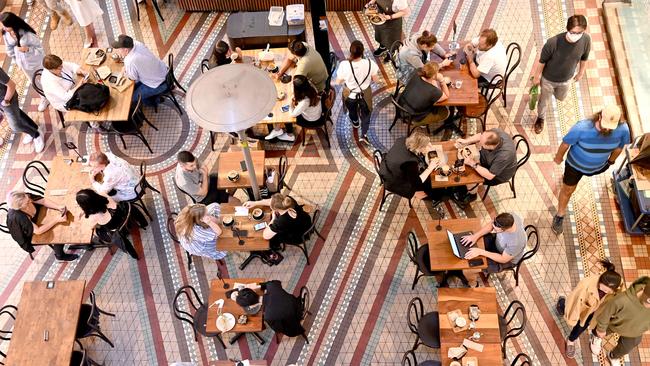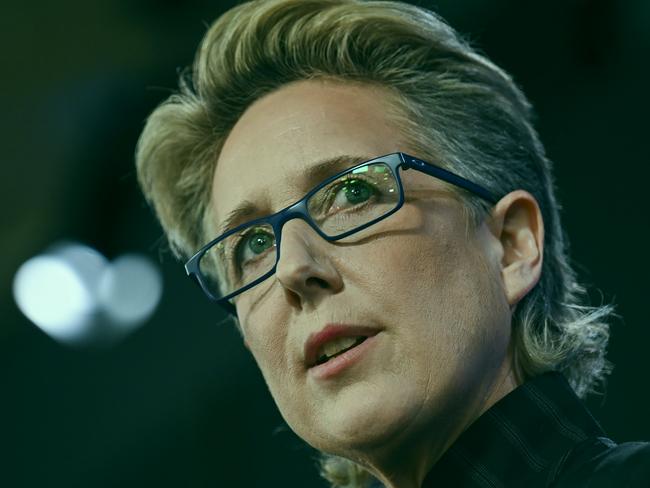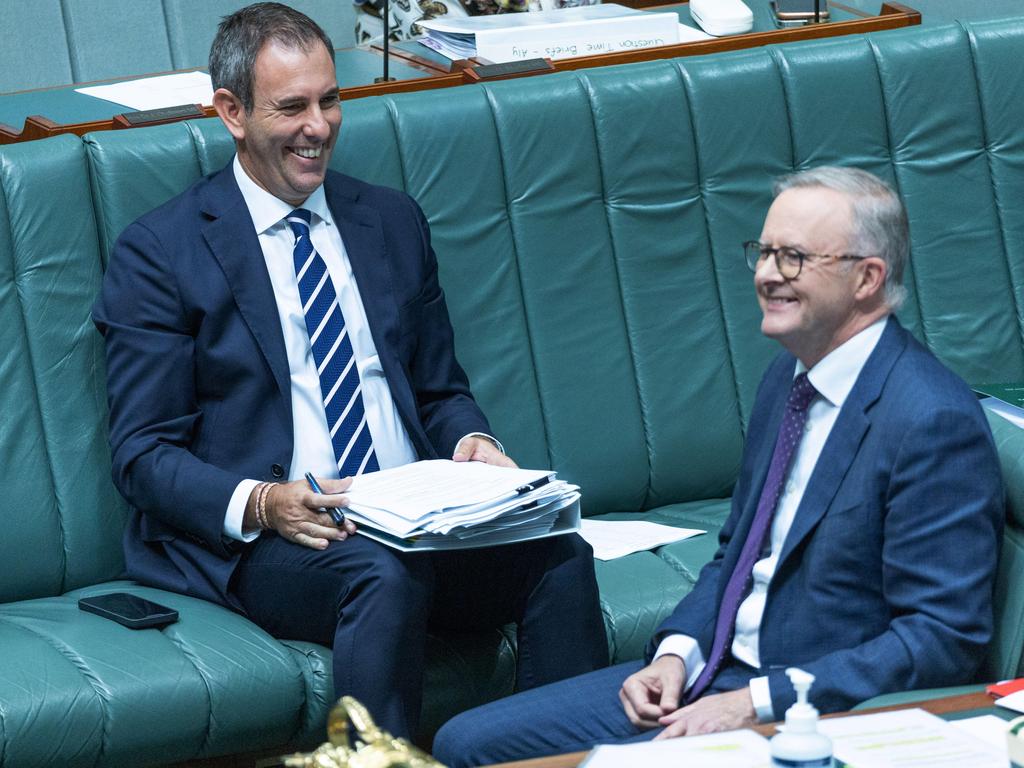Unions step up pay campaign after wages go back by record 4.5 per cent
Unions have stepped up a campaign to improve pay packets for workers and taken aim at the Reserve Bank after inflation sent real wages backwards by a record 4.5 per cent in 2022.

Unions have stepped up their campaign to improve pay packets for workers and taken aim at the Reserve Bank after soaring inflation sent real wages backwards by 4.5 per cent in 2022 – the largest fall on record.
A 7.8 per cent jump in consumer prices overwhelmed the fastest wages growth in a decade, with ACTU Secretary Sally McManus telling The Australian the 4.5 per cent real wage cut was “brutal and unprecedented”.
New figures revealed wages climbed by 3.3 per cent through 2022, the strongest outcome since 2012, and up from 3.2 per cent in the year to September.

RBA governor Philip Lowe remains on guard against a 1970s-style outbreak in wages, and he has indicated that growth well north of 4 per cent would not be consistent with inflation returning to the 2-3 per cent target range and require a stronger monetary policy response.
But Ms McManus warned that wages remained “very weak given all the pressures on people” and declared that workers were “going backwards”.
“More needs to be done to get wages moving,” she said. “Wage growth is clearly not contributing to inflation. Any wage rises in 2022 and early 2023 have been eaten up by price rises and interest rate rises,” she said.
“Business is not doing their part by limiting price increases. And the RBA continues to misread what is happening with wages, with projections that are always wrong – yet they continue to put rates up.”
Asked whether the ACTU’s national minimum wage claim this year would seek to keep pace with inflation, she said “those who are most struggling with the cost of living are the lowest-paid workers. We know from every previous annual wage review that it has a very small impact on overall wage growth.
“Whatever the lowest-paid in our country receive from the annual wage review will be critical (to) whether or not they can keep their heads above water.
“All these issues will be at the front of the ACTU’s mind when formulating our claim for this year’s increase.”
Jim Chalmers backed the unions in, saying “wages growth isn’t the problem when it comes to inflation – it’s part of the solution to cost-of-living pressures”.
The seasonally adjusted figures from the Australian Bureau of Statistics show the quarterly pace of pay, excluding bonuses, eased from 1 per cent in September to 0.8 per cent in December.
The result was softer than had been expected by economists, who forecast a 3.5 per cent annual increase, and could help ease concerns the RBA will have to go even further to contain inflation.
ANZ senior economist Catherine Birch said a wage-price spiral was no longer on the agenda.
CBA head of Australian economics Gareth Aird said labour market pressures were easing and the latest ABS figures effectively put to bed fears of out-of-control pay rises.
Employment unexpectedly fell in December and January, but the unemployment rate remained near 50-year lows of 3.7 per cent and the Reserve Bank recently referred to the labour market as “tight”.
While economists said the wages data would ease pressure on the RBA, Ms Birch said she still expected a further three rate rises to 4.1 per cent. She also noted that households were still spending relatively freely, despite intense cost-of-living pressures.
Private sector wage rises lifted to 3.6 per cent in the year to December, from 3.4 per cent in September as the quarterly pace slowed to 0.8 per cent in the final three months of last year – from 1.2 per cent in September.

Public pay, however, lifted by 0.7 per cent in the final quarter of 2022, against 0.6 per cent in the prior quarter. At 2.5 per cent, it lagged well behind the private sector.
Wages for wholesale trade jobs climbed by the fastest through last year, up by 4.2 per cent, followed by 4 per cent in manufacturing.
The quickest quarterly increase in wages was enjoyed by accommodation and food services employees, at 1.7 per cent – an annualised pace of almost 7 per cent.
The slowest annual pace was in industries dominated by government jobs, such as in public administration and safety – up 2.5 per cent – followed by healthcare and social assistance, which climbed by 3 per cent.
Pay increases have been supported by last year’s 5.2 per cent increase in the minimum wage, with the Fair Work Commission’s latest decision set to deliver a 15 per cent boost to the wages of hundreds of thousands of workers.
Enterprise bargaining agreements – which cover some 37 per cent of the country’s 13 million workers – have moved slowly, with wage increases typically still running at about 3 per cent.
Union leaders said there had been a slight increase in annual wage outcomes in enterprise agreements in recent months.
AWU national secretary Daniel Walton said “if employer lobby groups continue to agitate to say the sky is falling in with outrageous wage outcomes, they should be putting forward the evidence to show where all these agreements are”.





To join the conversation, please log in. Don't have an account? Register
Join the conversation, you are commenting as Logout